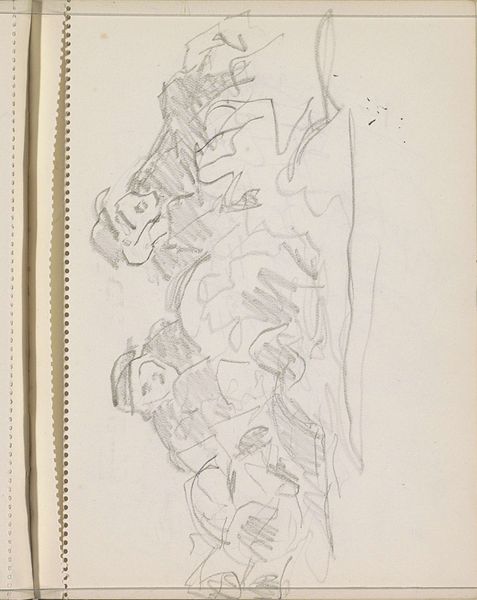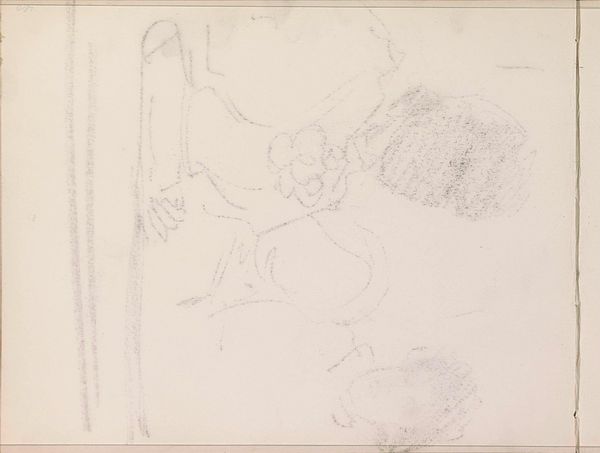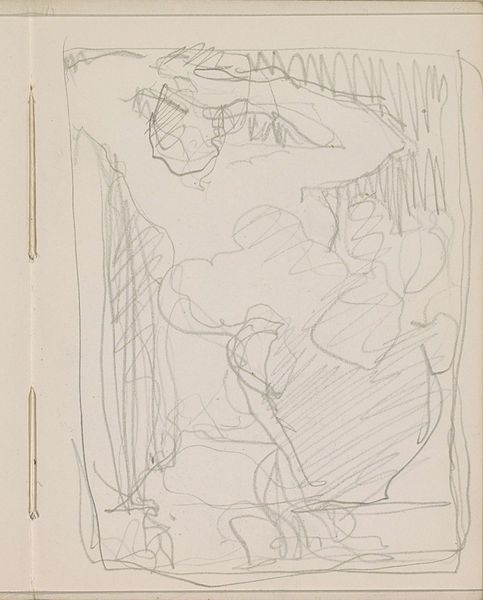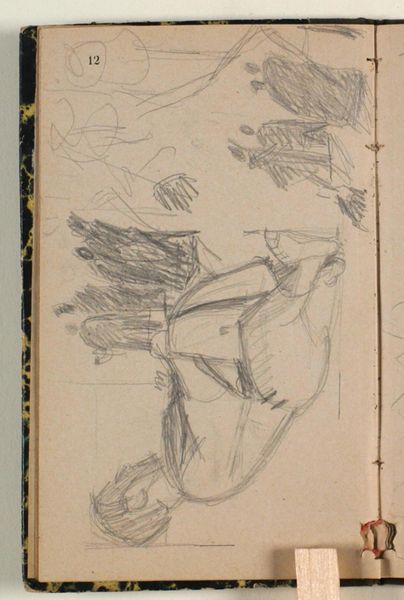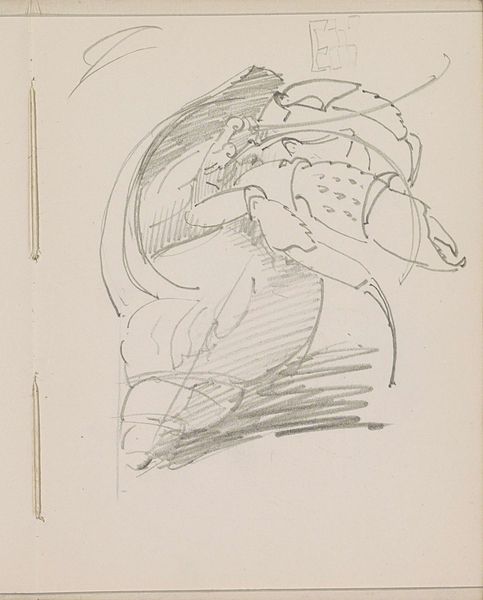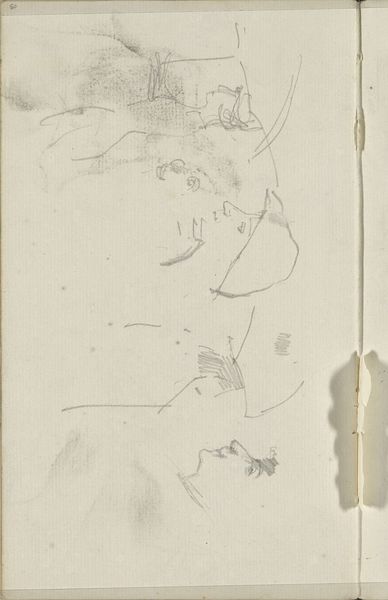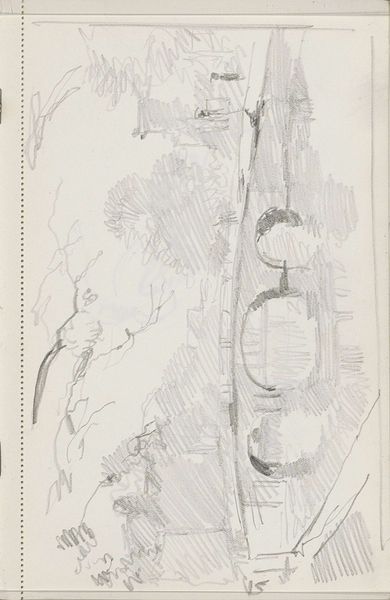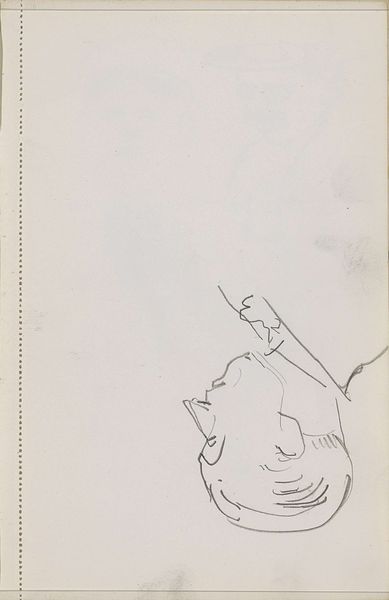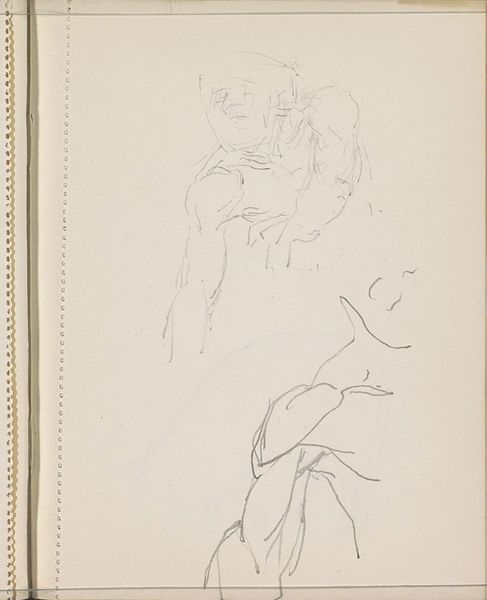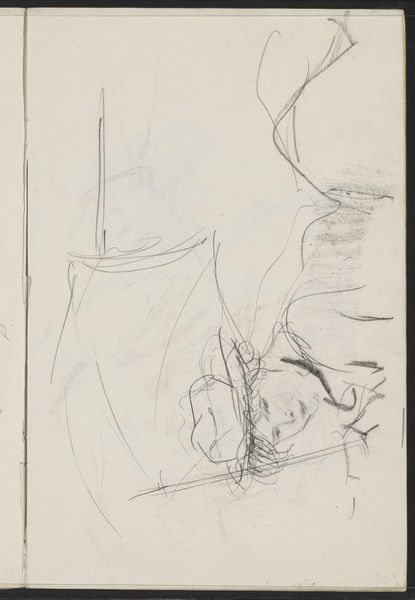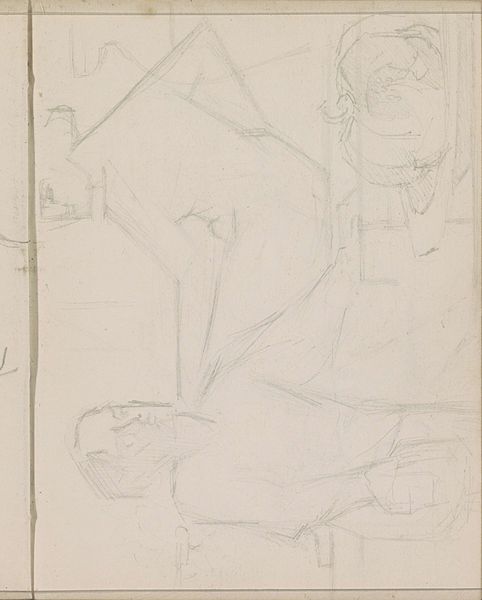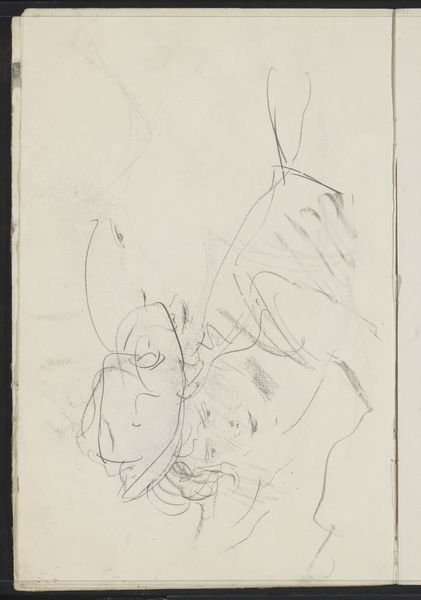
Copyright: Rijks Museum: Open Domain
Editor: This is "Vrouw zittend op een bank in een interieur," which translates to "Woman Sitting on a Bench in an Interior," from around 1916. It's a drawing, it looks like pencil and maybe some ink. The quick, sketchy lines give it a really intimate, almost voyeuristic feeling. What do you see in this piece? Curator: It's fascinating to consider this drawing within the context of early 20th-century Dutch art and society. The interior scene hints at a domestic sphere, traditionally considered a woman's domain. The sitter seems almost overwhelmed by her surroundings. What does the space suggest to you about her position? Editor: Maybe a sense of confinement? Or that she is really rooted and comfortable in this place? The patterns in the fabrics around her look intentionally chosen. Curator: Precisely. These visual elements carry a social weight. How does the artist use this interior space to portray, or perhaps question, prevailing ideas about gender and class at the time? Are they celebrating domesticity or perhaps subtly critiquing its limitations? Editor: It feels a bit ambiguous, doesn’t it? I think it's powerful that this simple drawing raises those kinds of questions about a woman's place and identity in society. Curator: It certainly does. Thinking about art as a reflection of its social and historical moment opens up all sorts of exciting interpretative possibilities. This piece offers a quiet, yet poignant commentary on the complexities of the era. Editor: It's given me a lot to consider about how art acts as a window into both the personal and political landscape. Curator: Exactly! Every brushstroke is a cultural artifact if you read it closely.
Comments
No comments
Be the first to comment and join the conversation on the ultimate creative platform.
